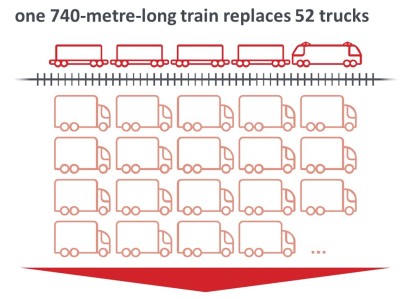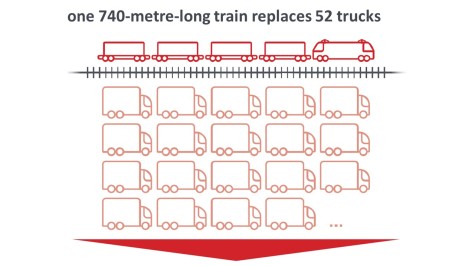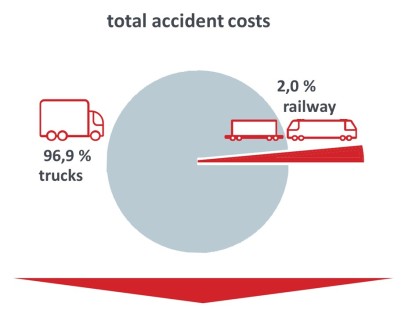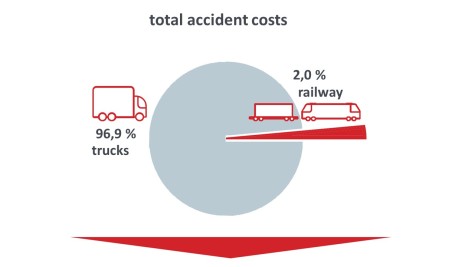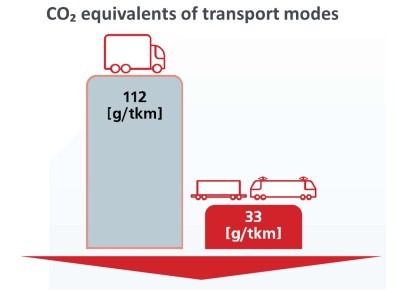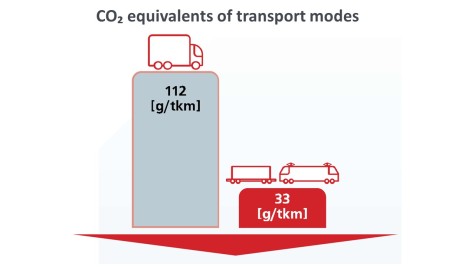CT can cope with rising transport demand
With rising transport demand, road infrastructure is reaching its capacity limits. As CT relies on modes of transport with high labor productivity, it can cope with this rising transport demand: The mass transport capacity of rail and ship and the flexibility of trucks combine the systemic advantages offered by each of these modes of transport.
CT increases transport safety
Continuous transport monitoring and centralized operational control of rail and inland waterway systems increase safety across the entire transport chain. Compared to road freight transport alone, Combined Transport shows a significantly lower rate of accidents and transport-related damage. Road freight transport accounts for 96.9 % of total accident costs (including personal injury and property damage) in freight transport, while rail freight is responsible for 2.0 % and inland waterway transport for 1.1 %.
System-related advantages
Vehicles used in pre- and on-carriage of Combined Transport are permitted a gross vehicle weight of 44 tons, instead of only 40 tons.
Vehicles in pre- and on-carriage of CT also benefit from exemptions from driving bans during the holiday season as well as on Sundays and public holidays.
Vehicles in pre- and on-carriage of CT can be exempt from motor vehicle tax.
By shifting the main-carriage to another mode of transport, truck trips are reduced and personnel and vehicle capacities are freed.
Choosing rail or waterway for the main-carriage enables greater transport security throughout the entire supply chain.
Shifting transport from road to other modes of transport leads to:
- lower transport volumes leading to less traffic congestion and lower journey times
- reduced road wear, especially on motor ways
- reduction in the externalities of road freight transport, such as air pollution and noise
- increased road safety



